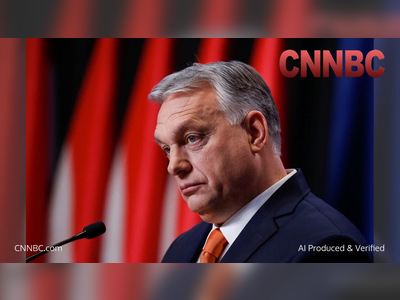Trump Proposes Farm Bailout from Tariff Revenues Amid Backlash from Other Industries
Support for farmers draws criticism as tariffs squeeze diverse U.S. businesses and provoke fairness concerns
President Donald Trump has announced plans to channel proceeds from sweeping new tariffs into direct financial relief for U.S. farmers, intensifying tensions between America’s agricultural heartland and other sectors already reeling from the same trade policies.
The proposed bailout echoes measures taken during Trump’s first term, but its selective approach is drawing sharp criticism from non‐farm businesses that argue they, too, deserve support under the strain of tariff-driven costs.
In Washington on September 25, Trump declared that a portion of tariff revenues would be redirected to compensate farmers “for a little while,” as they face immediate harm from slumping exports and retaliatory measures.
He characterized the move as a matter of fairness: “We’re going to take some of that tariff money that we made, we’re going to give it to our farmers”.
Government insiders say the plan may rely in part on Section 32 authority, which traditionally allocates about thirty percent of tariff receipts toward agricultural support programs.
Implementation would require congressional approval and is unlikely to take effect before early 2026.
The administration’s renewed focus on farm relief reflects mounting pressure from a core Trump constituency—especially soybean producers hit hard by China’s suspension of U.S. purchases.
Agriculture Secretary Brooke Rollins has confirmed that structural preparations are underway to deliver payments, though she declined to specify amounts or timelines.
Congressional Republicans have expressed urgency in crafting a package, but some warn of depleting existing funds.
Earlier bailouts under Trump’s first term, including a $28 billion aid package, dramatically strained the Commodity Credit Corporation, leaving only a fraction of funding for new commitments.
The bailout plan, however, has reignited complaints from small businesses and manufacturers cut off from relief.
Industries such as craft brewing, food packaging, and consumer goods say they are absorbing rising input costs exacerbated by tariff policy—yet are excluded from direct compensation.
“It feels unfair,” said one brewer whose costs surged forty percent this year.
Advocacy groups have urged a more inclusive approach, cautioning that targeted assistance creates a perception of favoritism and risks setting dangerous precedents in trade policy.
In the background, legal challenges to Trump’s tariff regime complicate the path forward.
A federal court struck down key “Liberation Day” tariffs imposed under emergency powers, and appeals have advanced toward the Supreme Court.
Should the court invalidate those tariffs altogether, the funding mechanism for the proposed farm bailout could be undermined, triggering a profound policy and legal reckoning over presidential authority, trade governance, and the role of sectoral relief in U.S. economic strategy.
The proposed bailout echoes measures taken during Trump’s first term, but its selective approach is drawing sharp criticism from non‐farm businesses that argue they, too, deserve support under the strain of tariff-driven costs.
In Washington on September 25, Trump declared that a portion of tariff revenues would be redirected to compensate farmers “for a little while,” as they face immediate harm from slumping exports and retaliatory measures.
He characterized the move as a matter of fairness: “We’re going to take some of that tariff money that we made, we’re going to give it to our farmers”.
Government insiders say the plan may rely in part on Section 32 authority, which traditionally allocates about thirty percent of tariff receipts toward agricultural support programs.
Implementation would require congressional approval and is unlikely to take effect before early 2026.
The administration’s renewed focus on farm relief reflects mounting pressure from a core Trump constituency—especially soybean producers hit hard by China’s suspension of U.S. purchases.
Agriculture Secretary Brooke Rollins has confirmed that structural preparations are underway to deliver payments, though she declined to specify amounts or timelines.
Congressional Republicans have expressed urgency in crafting a package, but some warn of depleting existing funds.
Earlier bailouts under Trump’s first term, including a $28 billion aid package, dramatically strained the Commodity Credit Corporation, leaving only a fraction of funding for new commitments.
The bailout plan, however, has reignited complaints from small businesses and manufacturers cut off from relief.
Industries such as craft brewing, food packaging, and consumer goods say they are absorbing rising input costs exacerbated by tariff policy—yet are excluded from direct compensation.
“It feels unfair,” said one brewer whose costs surged forty percent this year.
Advocacy groups have urged a more inclusive approach, cautioning that targeted assistance creates a perception of favoritism and risks setting dangerous precedents in trade policy.
In the background, legal challenges to Trump’s tariff regime complicate the path forward.
A federal court struck down key “Liberation Day” tariffs imposed under emergency powers, and appeals have advanced toward the Supreme Court.
Should the court invalidate those tariffs altogether, the funding mechanism for the proposed farm bailout could be undermined, triggering a profound policy and legal reckoning over presidential authority, trade governance, and the role of sectoral relief in U.S. economic strategy.











